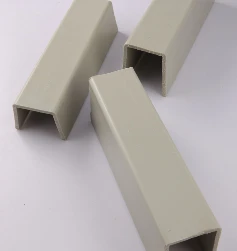Nov . 10, 2024 08:24 Back to list
Efficient PVC Pipe Solutions for Sustainable Drip Irrigation Systems
Drip Irrigation Using PVC Pipe A Sustainable Approach for Efficient Water Management
In the quest for sustainable agriculture, efficient water management is crucial. Among the various irrigation techniques, drip irrigation stands out as one of the most effective methods, particularly in water-scarce regions. When combined with PVC pipes, it provides an innovative solution for farmers looking to optimize water usage while ensuring healthy crop growth.
Understanding Drip Irrigation
Drip irrigation is a method that delivers water directly to the base of plants through a network of tubing, valves, and emitters. This system allows for a slow and steady supply of water, which minimizes evaporation and runoff. Compared to traditional irrigation methods, drip irrigation can reduce water usage by up to 60%, making it not only efficient but also environmentally friendly.
Why Use PVC Pipes?
PVC, or polyvinyl chloride, is a widely used plastic material known for its durability, lightweight properties, and resistance to corrosion. These characteristics make PVC an excellent choice for constructing drip irrigation systems. PVC pipes can withstand high pressures, making them suitable for various environments and ensuring a long-lasting solution for water delivery.
Designing a Drip Irrigation System with PVC Pipe
When designing a drip irrigation system using PVC pipe, several key considerations must be taken into account
1. Layout The first step is to plan the layout of the irrigation system, which will depend on the size and shape of the area to be irrigated. The design should ensure that water reaches all plants uniformly.
2. Pipe Selection PVC pipes come in various diameters. Choosing the correct size is essential for maintaining optimal water flow. Typically, larger diameters are used for main lines, while smaller ones are used for lateral lines leading to individual plants.
drip irrigation using pvc pipe

3. Emitters The efficiency of a drip irrigation system heavily relies on the placement and type of emitters used. Emitters release water at a controlled rate, ensuring that plants receive adequate moisture. It's important to select emitters based on plant needs and soil type.
4. Filtration and Pressure Regulation To prevent clogging, a filtration system should be installed before the water enters the main line. Additionally, pressure regulators will ensure that water flows evenly throughout the system, preventing potential damage from high pressure.
5. Maintenance Regular maintenance is key to the longevity of the system. This includes checking for leaks, cleaning filters, and ensuring that emitters are functioning properly.
Benefits of Using PVC Pipes in Drip Irrigation
1. Cost-Effective PVC pipes are relatively inexpensive compared to other materials, making them an economical choice for farmers. Their longevity reduces the need for frequent replacements, further lowering costs in the long run.
2. Lightweight and Easy to Install The lightweight nature of PVC makes it easy to handle and install, saving both time and labor costs.
3. Low Maintenance PVC is resistant to wear and tear caused by environmental factors. A well-designed PVC drip irrigation system can last several years with minimal maintenance.
4. Environmental Benefits By conserving water and reducing runoff, drip irrigation systems using PVC pipes contribute to sustainable farming practices. They help in preserving water resources, which is essential in the face of climate change and growing global water scarcity.
Conclusion
Drip irrigation using PVC pipes represents a modern approach to sustainable agriculture. By effectively managing water resources, farmers can enhance crop yields while minimizing environmental impact. As water scarcity becomes an increasingly pressing issue worldwide, implementing such innovative irrigation techniques will be crucial in ensuring food security for future generations. Embracing drip irrigation not only benefits individual farmers but also contributes to the health of our planet.
-
HDPE Natural Sheet: Durable, Food-Grade & Versatile Plastic Solutions
NewsAug.27,2025
-
Durable Glossy PVC Rigid Sheet | Premium High-Shine Panels
NewsAug.26,2025
-
Durable PP Rigid Sheet: Lightweight, Chemical Resistant Solutions
NewsAug.21,2025
-
PVC Grey Sheet for Extraction: Chemical Resistant & Durable
NewsAug.19,2025
-
Durable PVC Pipe Fittings for Plumbing & Irrigation Needs
NewsAug.18,2025
-
HDPE Steel Belt Reinforced Spiral Corrugated Pipe | High Strength
NewsAug.17,2025

